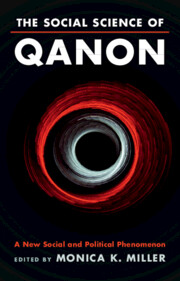Book contents
- The Social Science of QAnon
- The Social Science of QAnon
- Copyright page
- Dedication
- Contents
- Contributors
- Preface
- Part I Introduction to QAnon
- Chapter 1 The “Who, What, and Why” of QAnon
- Part II Recruiting and Maintaining Followers
- Part III QAnon and Society
- Part IV The Role of Communication in Promoting and Limiting QAnon Support
- Part V The Future of QAnon
- Index
- References
Chapter 1 - The “Who, What, and Why” of QAnon
from Part I - Introduction to QAnon
Published online by Cambridge University Press: 14 September 2023
- The Social Science of QAnon
- The Social Science of QAnon
- Copyright page
- Dedication
- Contents
- Contributors
- Preface
- Part I Introduction to QAnon
- Chapter 1 The “Who, What, and Why” of QAnon
- Part II Recruiting and Maintaining Followers
- Part III QAnon and Society
- Part IV The Role of Communication in Promoting and Limiting QAnon Support
- Part V The Future of QAnon
- Index
- References
Summary
Over the course of 2020, QAnon has repeatedly captured the news media’s attention more than ever as the group starts to move their activities from online chat boards into the offline world. With increased public attention, so too political commentators (expert and lay) increasingly refer to QAnon as a “cult” (Blazakis, 2021; Hassan, 2021). What is missing in the growing literature on QAnon is: (1) an examination of the movement within the context of the substantial academic literature on new religious movements and (2) use of this research to see whether labeling QAnon a “cult” or “new religious movement” makes sense in a comparative context. This is of particular importance not only because the use of these terms by the public is usually divorced from academic research on the topic, but also because the terms are often used as weapons to tarnish a movement that is considered to be deviant in some way. We argue that QAnon indeed has elements of a new religious movement, and note that treating it as such reveals insights for how the movement will evolve and develop over time.
- Type
- Chapter
- Information
- The Social Science of QAnonA New Social and Political Phenomenon, pp. 3 - 14Publisher: Cambridge University PressPrint publication year: 2023

